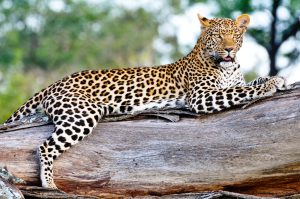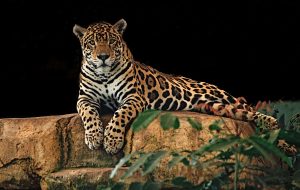Exploring the Big Cats
- 5 min read
- By Phillip Imler
The term “Big Cats” encompasses a captivating collection of large wild felines, known for their majestic presence and remarkable characteristics. This group typically includes lions, tigers, leopards, and jaguars. Renowned for their strength, agility, and predatory prowess, Big Cats hold a special place in both natural ecosystems and human cultures.
Lions, the iconic symbols of courage and community, form social groups called prides. Tigers, the largest of the Big Cats, boast distinctive stripes and solitary habits. Leopards, adaptable and elusive, thrive in diverse environments. Jaguars, with their powerful build, are skilled hunters in the dense forests of the Americas.
Apart from lions, tigers, leopards, and jaguars, other large wild cats are occasionally included in the broader category of Big Cats. The inclusion of additional species can vary, but the Cheetah, Cougar, and Snow Leopard are frequently added to the list.
It’s important to note that the classification of Big Cats can vary among different contexts, and the term is often used more informally to refer to large, predatory felines with shared characteristics rather than a strict scientific grouping.
Lions (Panthera leo) are majestic large cats known for their iconic manes, a distinctive feature of males. Native to Africa and parts of Asia, they live in social groups called prides, led by dominant males. Lions are formidable predators, with strong bodies and sharp claws. They exhibit sexual dimorphism, where males are larger and have impressive manes, contributing to their regal appearance.
Known for their powerful roars, lions communicate within the pride. Despite their status as apex predators, they face conservation challenges, including habitat loss and human-wildlife conflict, highlighting the need for efforts to protect these symbolically significant animals.

Unfortunately, many tiger subspecies face threats such as habitat loss and poaching, making conservation crucial. Recognized for their cultural significance, tigers symbolize strength and beauty, prompting concerted efforts to protect and preserve these magnificent creatures for future generations.

Their elusive nature and nocturnal habits contribute to their prowess as solitary predators. Facing threats from habitat loss and human-wildlife conflict, leopard conservation is vital for maintaining the balance of ecosystems and preserving the beauty of these adaptable and enigmatic feline species.

As elusive solitary predators, they navigate dense jungles with ease. Unfortunately, jaguars face habitat loss and poaching threats, emphasizing the importance of conservation efforts to safeguard these charismatic and ecologically significant species in the wild.

Exceptional hunters, they rely on speed and stealth to pursue and capture prey. Despite their remarkable agility, cheetahs face conservation challenges, including habitat loss and human-wildlife conflict. Conservation efforts are crucial to ensure the survival of these iconic big cats and their vital role in maintaining ecological balance.

Human expansion into their habitats poses challenges for their conservation. As a symbol of wilderness, cougars play a crucial role in maintaining ecosystem balance, making their preservation vital for biodiversity.

Unfortunately, these magnificent cats face threats from habitat loss, poaching, and retaliatory killings. Conservation efforts are crucial to safeguard these endangered creatures and the unique ecosystems they inhabit, ensuring the continuity of this iconic species against the challenges of the modern world.
Among the big cats, the most vulnerable to extinction are often the snow leopard and the Amur leopard. Both face threats from habitat loss, poaching, and human-wildlife conflict. Conservation efforts need to focus on protecting their habitats, establishing effective anti-poaching measures, and mitigating conflicts between these cats and local communities.
Additionally, community engagement and awareness programs play a vital role in fostering coexistence and garnering support for conservation initiatives. Collaboration between governments, non-profit organizations, and local communities is essential to ensure the survival of these magnificent and endangered big cat species.
Each big cat species has unique conservation needs, but there are common challenges that span their conservation efforts. Here are specific considerations for some of the big cats:
Efforts should involve collaboration between governments, NGOs, local communities, and the international community to address these conservation needs effectively.
